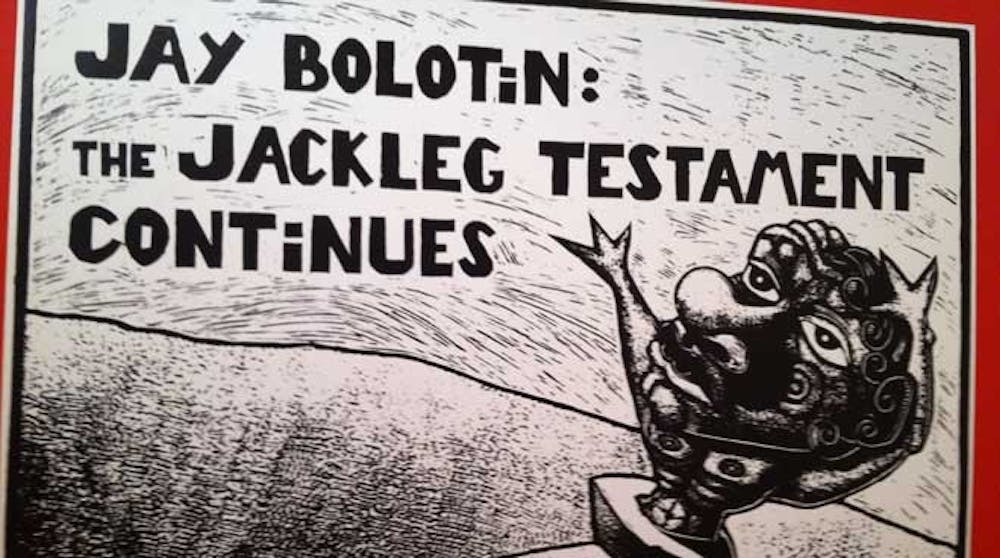A preface to the story of Adam and Eve is explored in artist Jay Bolotin's multiwork and multimedia exhibition, "The Jackleg Testament Continues," which is currently on display in the Joel and Lila Harnett Museum of Art, located in the Modlin Center for the Arts.
"I always found the story strange because I never understood what Eve did wrong," Bolotin said.
In Bolotin's version of the story, "Jack" is embodied by a jack-in-the-box toy and plays the role of Adam.
After breaking free from a Godlike figure known as "Nobodaddy," Jack represents the serpent in the tree and gives Eve a violin. Jack and Eve then go to Paris to perform an "act of creation." The characters watching the act throw fruits and vegetables at them, and Eve happens to catch the infamous apple. She then realizes she must return to the Garden of Eden, where the well-known story of early Christianity begins.
Bolotin is a multifaceted artist, musician, set designer and filmmaker. His artwork has been shown in his native Cincinnati, New York, San Diego and Australia among other places. The exhibit began Aug. 21.
The exhibit consists mainly of woodcuts, images carved into pieces of wood, said Karolina Karczewska, a senior at University of Richmond and employee at the university museums. After the wood designs are covered with ink, the images are pressed onto paper to leave behind a print.
In addition to the prints, the exhibit also showcases the motion picture that was made by animating the woodcuts titled, "The Jackleg Testament Part 1: Jack and Eve." The film, which took almost seven years to complete, won best animation at the Santa Fe Film Festival in 2008, Bolotin said.
A second print portfolio, "The Jackleg Testament Part II: The Book of Only Enoch," is included in a separate wing of the exhibit. The work, inspired by books of the Old Testament, is still in progress, Bolotin said. (Bolotin's past portfolios have taken an average of 10 years to complete.) As a result, he handwrote the working story of his protagonist "Only Enoch," the son of the only Jewish coal miner in Kentucky, in pencil on the whitewash walls surrounding the displayed prints. The task took him three days to complete.
Another short animated film, "Kharmen," is on display as well, which is the prologue to Bolotin's next film. The content was drawn from Bolotin's graphite drawings and is loosely based on the 1875 opera "Carmen."
On Friday, Sept. 6, Bolotin gave a talk in Camp Concert Hall in Modlin titled "Migration of Imagery." Bolotin spoke about growing up in rural Kentucky and being immersed in storytelling and music.
He grew up reading tales from the Grimm Brothers and the Bible and felt there was a correlation between the two. Bolotin explained that the initial inspiration for his artwork came from a story in the local newspaper in 1976 about a boulder that imploded a home, leaving behind a little girl as the sole survivor.
"I began to explore questions of fate and unseen forces in the world," Bolotin said. "I believe it is our job to try and find meaning from these situations."
Enjoy what you're reading?
Signup for our newsletter
Karczewska said she was impressed by Bolotin's storytelling ability and his reinvention of existing stories. Another observer was overheard saying, "This is really so different."
The exhibit is on display now through Oct. 22.
Contact Collegian Reporter Renee Ruggeri at renee.ruggeri@richmond.edu
Support independent student media
You can make a tax-deductible donation by clicking the button below, which takes you to our secure PayPal account. The page is set up to receive contributions in whatever amount you designate. We look forward to using the money we raise to further our mission of providing honest and accurate information to students, faculty, staff, alumni and others in the general public.
Donate Now



